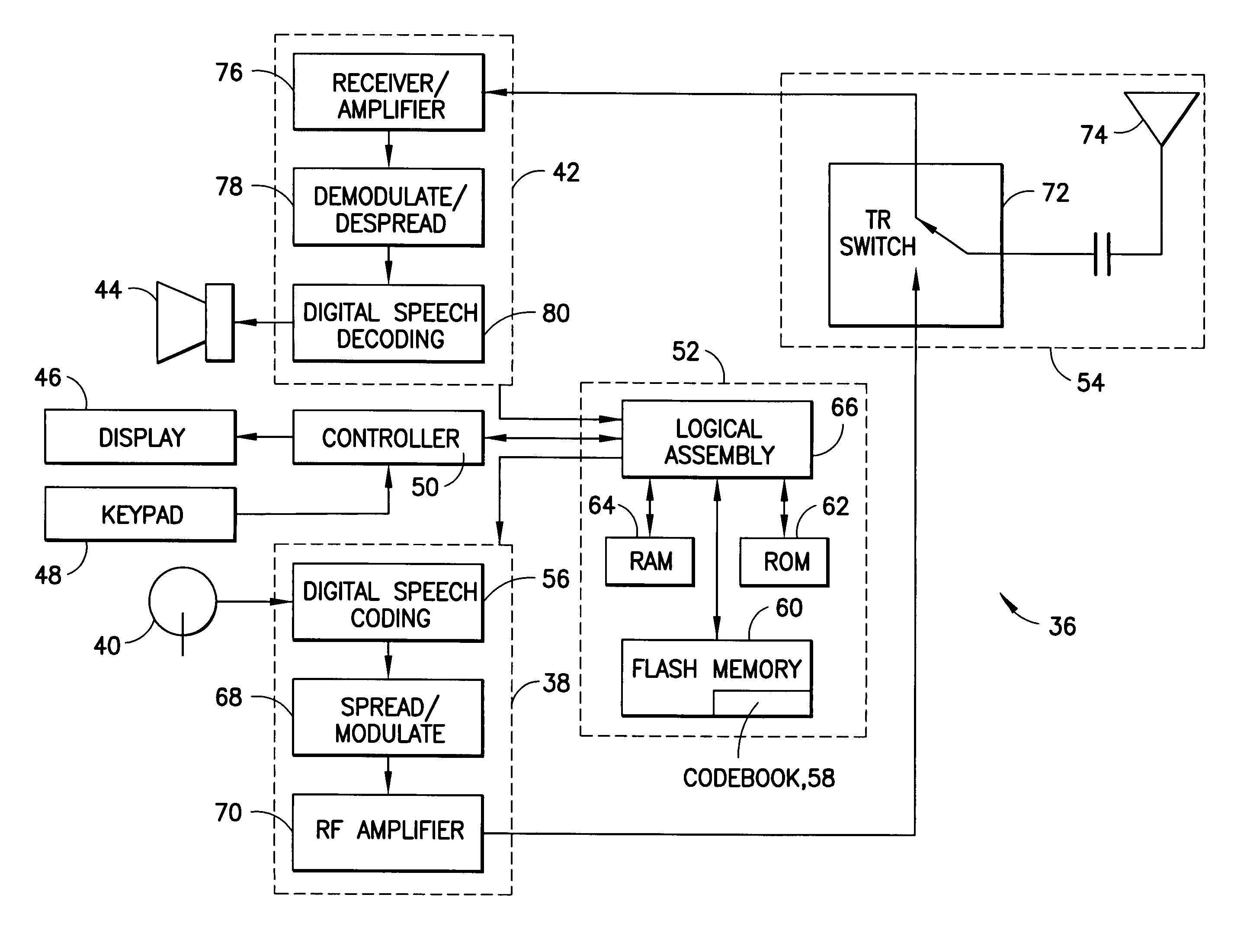Low-rate in-band data channel using CELP codewords
a low-rate, data channel technology, applied in data switching networks, multiplex communication, instruments, etc., can solve the problems of low error, low speed, delay insensitive, missed frame at the decoder, etc., to improve the receiver, improve the effect of data rate and effective codebook siz
- Summary
- Abstract
- Description
- Claims
- Application Information
AI Technical Summary
Benefits of technology
Problems solved by technology
Method used
Image
Examples
Embodiment Construction
[0022]FIGS. 1-2 are schematics illustrating an overview of the environment in which the present invention may be employed. FIG. 1 is a schematic diagram of a prior art network 10 having elements interconnected to communicate with one another using packet switching and circuit-switching. Computer-based phone terminals 12 are LAN based endpoints for packetized voice transmissions that include at least one encoder / decoder (codec), such as a PC running NetMeeting™ software by Microsoft™ and an Ethernet enabled phone. Computer based phone terminals 12 may also implement video and other non-speech data communication capabilities. A plurality of access elements 14, such as routers, gatekeepers, and a multipoint control unit (MCU) operate to connect the terminals 12 to broader elements of the network 10.
[0023] A plurality of gateways 16 connect packet-switched networks to more traditional speech networks, such as circuit switched networks. An example is the gateway 16 in series with the tr...
PUM
 Login to View More
Login to View More Abstract
Description
Claims
Application Information
 Login to View More
Login to View More - R&D
- Intellectual Property
- Life Sciences
- Materials
- Tech Scout
- Unparalleled Data Quality
- Higher Quality Content
- 60% Fewer Hallucinations
Browse by: Latest US Patents, China's latest patents, Technical Efficacy Thesaurus, Application Domain, Technology Topic, Popular Technical Reports.
© 2025 PatSnap. All rights reserved.Legal|Privacy policy|Modern Slavery Act Transparency Statement|Sitemap|About US| Contact US: help@patsnap.com



